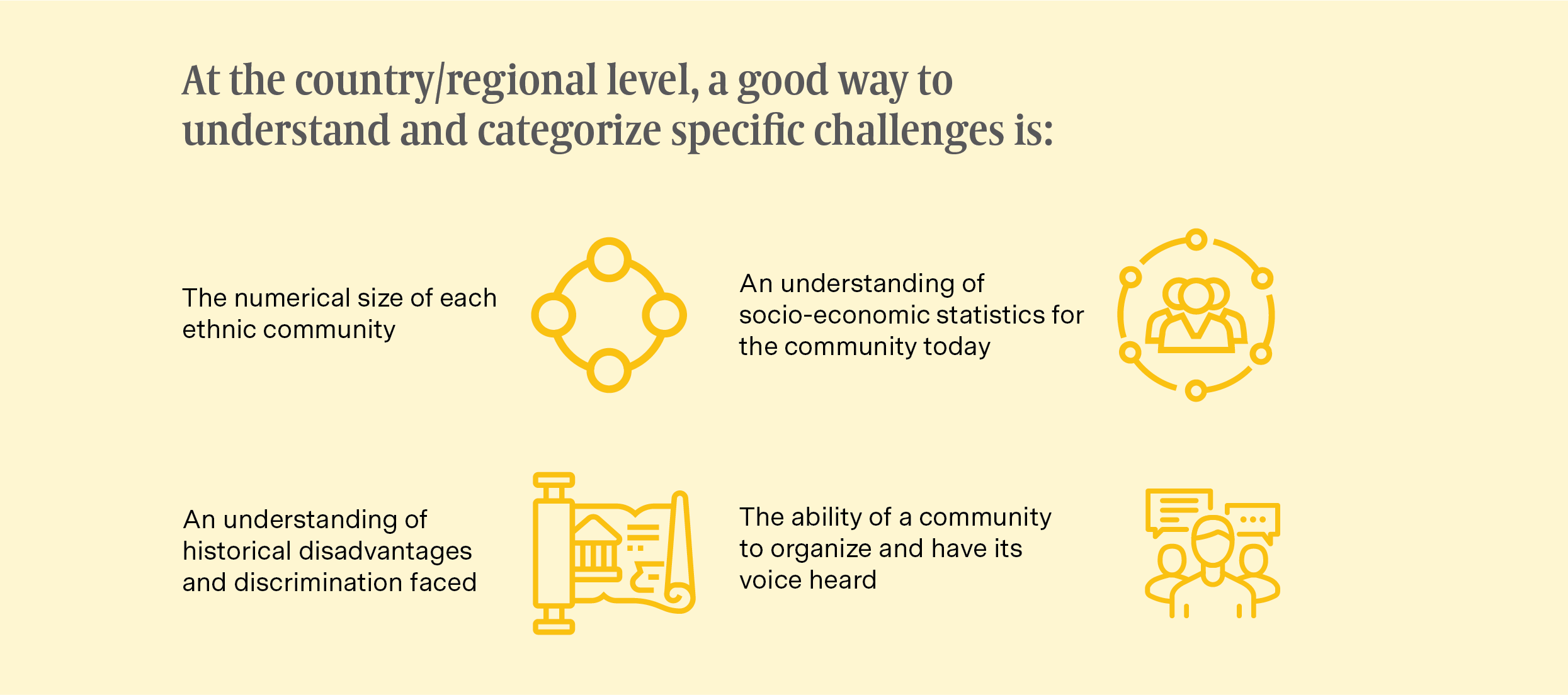A good starting point is to reflect on the definition of ethnicity itself.
The terms “ethnic,” “ethnic diversity,” “ethnic minority,” or “ethnicity” are all used as identifiers for a minority population subgroup, usually within the context of and in contrast to a majority subgroup. The markers for distinction between the subgroups are broadly accepted to be a combination of national origin, racial origin, and cultural identity.
Consequently, it immediately becomes clear that who is in a minority or majority subgroup of any population will vary by country and region. This naturally leads to the conclusion that progress on ethnic diversity may lend itself to global “principles,” but almost certainly needs specific strategies, tactics, and actions in each of the countries and local contexts that your business operates. Bottom-up approaches and customization of initiatives are generally a much surer way to sustainable outcomes.
Once ethnic categories are identified, how do you determine that there is intended or unintended discrimination, underrepresentation, or both? In the UK, the statistics on this are clear. Hate crime in England and Wales has more than doubled from 40,000 cases in 2013 to over 100,000 cases in 2019, and 75 percent of all hate crime is race-related or racially motivated, according to the Office of National Statistics, UK.
In another example, age-adjusted, the British Black population is four times as likely to succumb to COVID-19 as the White population. The reasons behind some of the statistics are deep-rooted and multi-generational but predominantly social rather than genetic, and therefore unacceptable in modern democratic societies.
Britain has a significant race equity issue. However, it is important to acknowledge that the make-up of the population of the UK is materially different from other White majority countries in Western Europe and North America. Although the issues faced may be linked to happenings across the world, they are ultimately specific to the UK and linked to local, socio-economic, and ethnic community specific factors.
On population statistics alone, the need for country-specific responses is clear. In addition, each ethnic minority faces its own unique set of challenges—some far more cruel and debilitating than others. This requires targeted, community-specific responses (e.g., Black and Indian ethnic minorities in the UK may be numerically similar in sizes, but merit divergent interventions from an inclusion perspective) in society and in companies. Equally importantly, the Black Lives Matter movement is as important in the UK as it is in the United States, but will play out differently, due to different demographics and historical contexts.

Each organization needs to have clarity on this picture above to calibrate interventions so that they are made with the utmost understanding and the greatest possible societal benefit.





